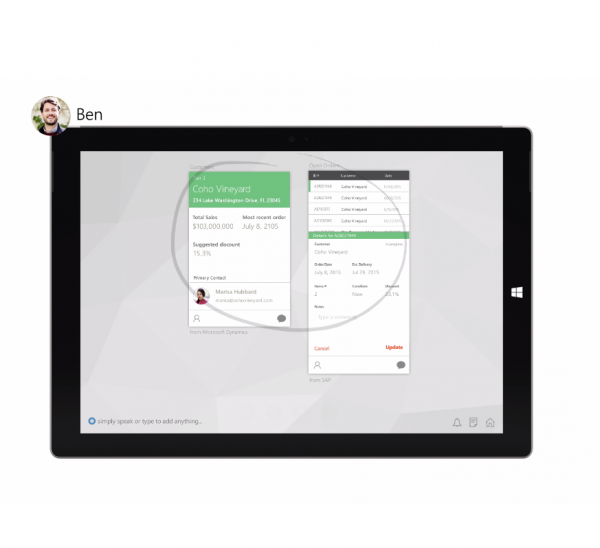
The future of business -- and for some, the present -- is a world without barriers. Gone is the anger-inducing commute and soul-sucking cubicles. Working from home, the coffee shop, or even the beach from the device of your choice is a real possibility.
The problem, however, is a lack of easy to use collaboration, delegation and tracking tools. Not to mention the overwhelming number of in-use programs -- and devices -- that do not communicate with each other. Simply sharing a screen with remote users and dialing into a conference line is a recipe for boredom and failure. There needs to be a better way. Microsoft is hoping its new solution Project GigJam -- announced today at the 2015 Worldwide Partner Conference -- is that way.
"GigJam is designed for the emerging workforce that is more connected, more available and more social than ever before. With GigJam, a business can expect a dramatic transformation of every process where humans have the potential to exercise discretion and work with others, colleagues as well as customers", says Microsoft's Ambient Computing Team.
The team also says, "while so much of our industry is today focused on coming up with new forms of instant messaging and new ways to share documents, media content and links, GigJam takes on the next big challenge in productivity: task work. The way it does it: allowing people to extract and share the very molecules of work itself, and involve others in completing them".
[blogs.technet.com]Microsoft shares the above video which just gives a glimpse into the GigJam vision. Remember, a lot of company money is simply wasted by both a lack of productivity and duplicated efforts. A solution such as GigJam could pay for itself and be a huge win.
While the demonstration looks impressive, it will need to be tested in real life to see if it can really meet a company's needs, of course. One size does not fit all in the business world, so Microsoft has a lot of work to do. It will have to demonstrate commitment to this project.
What I do find quite odd, is how much the design resembles Google's Material Design. It looks very much out of sync with the DNA of Microsoft's other products. This is not a bad thing, quite the contrary, it is beautiful, but curious nonetheless.
Do you think this could benefit your company? Tell me in the comments.

